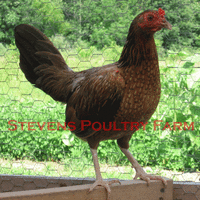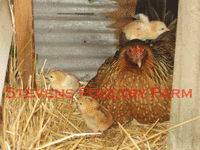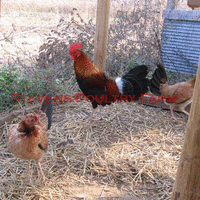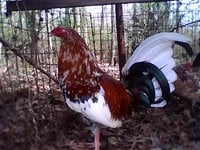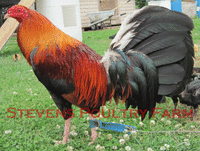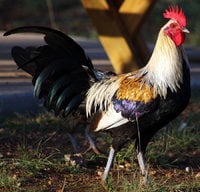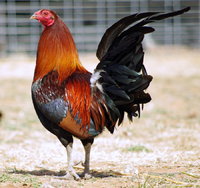General Information
- Breed Purpose
- Ornamental
- Comb
- Pea
- Broodiness
- Frequent
- Climate Tolerance
- All Climates
- Egg Productivity
- Medium
- Egg Size
- Medium
- Egg Color
- White
- Breed Temperament
- Aggressive,Easily handled,Bears confinement well,Noisy
- Breed Colors/Varieties
- Almost any color imaginable.
- Breed Size
- Large Fowl
American games were created by the various European, and Oriental games that were brought into our country by our forefathers. They bred them specifically for cockfighting, leaving us the birds we have today. Cockfighting is a large part of our heritage, like it is in many other countries around the world, but due to recent law changes, these beautiful birds are becoming more popular as an ornamental, or show fowl. There are organizations, like the American Gamefowl Society, that have standards for showing these birds, just as the APA does, and many people are starting to breed these birds for this, instead of the pit, but in the same time keeping the gameness that makes them what they are.
The American gamefowl is broken down into strains, unlike most other fowl. Some of the more popular strains are Hatch, Kelso, Albany, Sweater, Whitehackle, Claret, Roundhead, and Butcher. Strain names originated from people that performed well in the pits, with the birds they made themselves through selective breeding. Strains are also broken down further by other breeders who did well with a particular strain, which in turn had a version of that strain named after them. A good example of this would be the Kelso fowl. The original Kelso was named after Walter Kelso, but one of the most well known breeders that did well with them was Johnny Jumper. This is where the Jumper line of Kelso originated.
Most strains have several well-known bloodlines that other breeders have made famous. I know it sounds confusing, but these are all considered American games, but they have been broken down further based on their performance in the pits. Now days, most of the originators of these lines are long gone, but they are still called by these names, and an experienced gamefowl enthusiast knows that if they have a certain strain, it will have the correct look, and performance attributes of the original line it was named after.
A few more examples of this are: Marsh Butchers, named after Phil Marsh; Sweaters, named after Herman “Sweater” McGinnis, who got his nickname from one day in 1926, the temperature dropped considerably, and Herman McGinnis was seen wearing a red knit sweater with buttons down the front. The bottom went to his knees like a dress, and the sleeves were rolled up to elbows and were bunched up as big as a football. About all you could see was a face, two hands, and two feet sticking out of a red sweater. Immediately people around him would say, " Come here, Sweater” and the name just stuck; Lacy Roundheads, named after Judge Ernest Lacy. There are also other strains that their names came from certain circumstances, or a particular color. Some examples of these would be: Roundheads due to their dark feathering; Whitehackles got their name from being a red hackled fowl that if you lifted the hackle feathers, they were white underneath; Bumblefoot Grey fowl got their name from their color, and how these birds were raised in a very rocky area, and showed up at the pits with damaged feet from this on a regular basis.
As you can see, there are many different strains of American games, and I only touched on a very small percentage of the most well known ones, but this should give you more of an understanding on how the different strains were created.
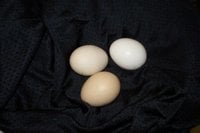
American Game eggs
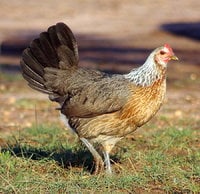
American Game hen
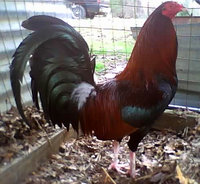
American Game rooster
For more information on this breed, see the breed discussion here: https://www.backyardchickens.com/threads/american-game-chickens.1200956/

